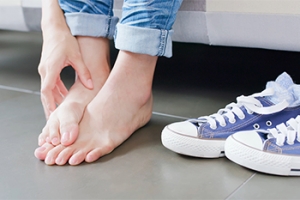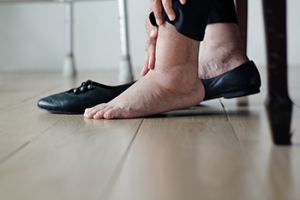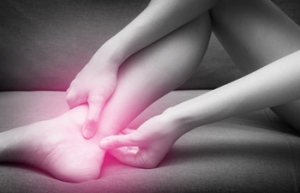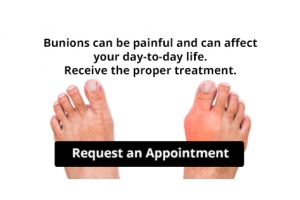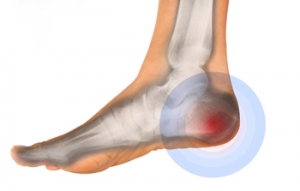Super User
Can Athlete’s Foot Be Avoided?
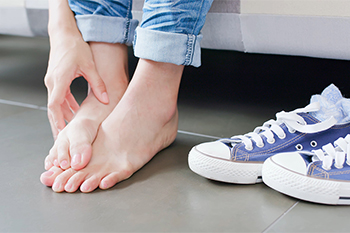
A variety of different fungi can cause a skin infection known as athlete’s foot. It can be quite uncomfortable and may have symptoms that consist of itching, red, and dry skin. The medical name for athlete’s foot is referred to as tinea pedis which lives in warm and moist environments. These can include public swimming pools, shower room floors, and locker rooms. It is suggested to wear appropriate shoes while in these types of areas as this may help to avoid getting athlete’s foot. Additionally, other effective prevention methods can consist of trimming the toenails correctly and avoiding wearing shoes or socks that are not made of breathable materials. The feet will feel better when they are kept dry and cool, and it is beneficial to air out any shoes that are worn approximately every other day. Athlete’s foot can be difficult to treat and may be recurring. If you are afflicted with this condition, it is advised that you schedule an appointment with a chiropodist who can prescribe the necessary medication.
Athlete’s foot can be uncomfortable and unsightly. To learn more about preventing and treating this condition, please consult with one of the chiropodists from The Footcare Centre. Our chiropodists will assess your condition and provide you with quality foot and ankle treatment.
What Is Athlete’s Foot?
Athlete’s foot refers to an infection of the skin on the feet that is caused by a fungus. This fungus is contagious and thrives in warm and moist environments. It is often spread in common areas such as public pools, locker rooms, and showers. It can also spread when sharing personal items, like shoes or towels, with an infected person.
Symptoms
The symptoms of athlete’s foot may include:
Itching, stinging, or burning of the skin on the feet
Cracking or peeling skin, especially between the toes and on the soles of the feet
Scaly, red rash on the foot
Blisters
Foul odor
Treatment
Treatment for athlete’s foot typically involves using over-the-counter topical antifungal medications on the feet. When over-the-counter options are ineffective, you may need to take prescription oral medications or topical antifungal drugs, or a combination of both.
Prevention
Preventing athlete’s foot places an emphasis on good foot hygiene practices.
You can prevent athlete’s foot by:
Washing and drying your feet thoroughly every day
Wearing shoes when walking in public areas
Not sharing personal items, like shoes or socks, with others
Wearing shoes and socks made out of breathable materials
If you have any questions, please feel free to contact our office located in . We offer the newest diagnostic and treatment technologies for all your foot care needs.
Athlete's Foot
Athlete’s foot, also known as tinea pedis, is a fungal infection of the skin of the feet. The fungus that causes athlete’s foot lives and thrives in warm, moist environments such as public swimming pools, locker rooms, and showers. This fungus can infect the feet through a cut or crack in the skin. Athlete’s foot is also highly contagious, and the fungus can spread from person to person through sharing personal items such as shoes, socks, or towels.
The symptoms of athlete’s foot include itching, stinging, or burning between your toes or on the soles of your feet, itchy foot blisters, and dry, cracked, or peeling skin on the feet. The infection can also spread to your toenails, leading to discoloration, thickening, and crumbling.
Through a physical examination, athlete’s foot can be diagnosed by your chiropodist based on its symptoms. Sometimes, a skin test may be ordered to confirm the diagnosis. Athlete’s foot can be treated with both oral and topical over-the-counter or prescription medications. You can prevent a fungal infection by maintaining good foot hygiene, wearing shoes when walking in public areas, avoiding sharing personal items with others, and keeping your feet clean and dry.
Are You Suffering From Ingrown Toenails?
Dealing With Swollen Feet
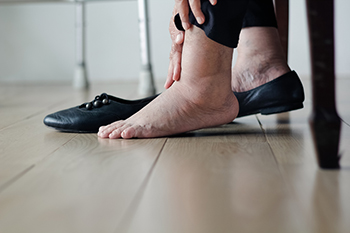
Swelling of the feet and ankles is caused by a buildup of fluid that makes the area look puffy. It generally is an indication of an unrelated malady and is usually not a problem in and of itself. Swelling may be a sign of poor circulation or a reaction to trauma. You can tell if swelling is present by pressing on the area. If it leaves an indentation on the skin, which may be shiny and tight, the area is swollen. It also can be recognized if an indentation appears on the skin when you take off your socks. Common reasons for swelling include injury, infection, inflammation, or an insect bite. In addition, some autoimmune diseases, circulatory problems, and medications may cause swelling. Sometimes, resting, icing, and elevating the foot or ankle is enough to reduce the swelling. If swelling continues, even after taking these measures, it is a good idea to visit a chiropodist for a detailed examination to identify the underlying cause. Treatment options will be determined by the source of the swelling.
Caring for your feet is not just something done at the chiropodist’s office. Good foot care starts at home. If you would like to learn more about daily foot care practices, please consult with one of the chiropodists from The Footcare Centre. Our chiropodists can help you maintain the health of your lower limbs and your mobility.
There are many things that you can do at home to help care for your feet, including:
Wearing shoes and socks that fit properly
Washing the feet daily with soap and water
Drying the feet thoroughly
Applying moisturizer to the soles and heels of the feet
Taking a walk and exercising the feet regularly
Doing foot stretches and strengthening exercises
A chiropodist can help figure out a manageable foot care routine for you to keep your feet healthy. If you have any questions, please feel free to contact our office located in . We offer the newest diagnostic and treatment technologies for all your foot care needs.
Everyday Foot Care
Good foot care is proactive, rather than reactive. While a chiropodist can diagnose, treat, and help you manage a variety of foot and ankle conditions, preventing foot problems and keeping the feet healthy is something that you can do at home as well. Having and following an established daily foot care routine can be very beneficial.
Maintaining good foot hygiene helps prevent a variety of foot problems, including infections like athlete’s foot and fungal toenails. It is important to wash your feet every day using lukewarm water and mild soap. Wash the entire foot, from heel to toe. Then dry the foot thoroughly, taking extra care to dry in between the toes. Moisturizing the heels and soles of the feet after washing them can help keep the skin soft, hydrated, and free of cracks.
Stretching and strengthening the feet can maintain or improve their mobility. There are many easy foot exercises that you can do to keep your feet strong and flexible, such as toe scrunches and heel raises. Maintaining a healthy diet and exercising regularly can help keep your weight under control, relieving excess pressure and strain on the feet.
Finally, wearing the right shoes is one of the easiest ways to care for the feet. Many people wear shoes that are too tight or narrow, shoes that don’t support the feet adequately, and shoes that are made of materials that trap moisture on the foot. Opt for comfortable, properly-fitted shoes that support and protect your feet.
For more information about daily foot care practices for good foot health, please consult with a chiropodist.
What Is Tendonitis?
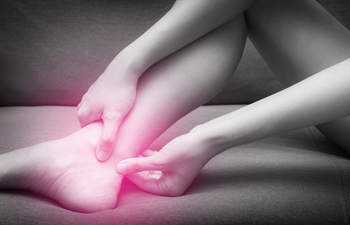
Tendonitis is when there is damage to a tendon that connects muscles to bones. It can be difficult to diagnose because it has some of the same symptoms as other ailments. When you have a problem with your Achilles tendon there will likely be pain, stiffness, swelling to nearby joints, and weakness in the surrounding muscles. You may also experience a grinding sensation when a hand is placed on the tendon because the damaged, injured cells are brought to the surface, a possible popping or snapping sound when the tendon is stretched across the bone and redness or discoloration at the site. If you are suffering several of these symptoms at the same time it is likely you have an injury to your Achilles tendon. If these progress to fever, infection is probably present and an appointment with a chiropodist is in order. A chiropodist can properly diagnose tendon or other foot and ankle issues as well as provide appropriate treatment options.
Achilles tendonitis is a common injury of the Achilles tendon, a band of fibrous tissue that runs along the back of the lower leg. The Achilles tendon can also rupture, making it impossible to lift the foot. If you are suffering from heel or calf pain, please consult with one of the chiropodists from The Footcare Centre. Our chiropodists can help you maintain the health of your lower limbs and your mobility.
Causes of Achilles tendon injuries include:
Repetitive stress or overuse
Sudden increase in activity levels
High impact injury
Calf muscle tightness or weakness
Altered foot biomechanics
Heel bone spurs
Underlying medical conditions that weaken the tendon
Symptoms of an Achilles tendon injury include:
Heel and calf pain that worsens following exercise
Chronic heel and calf pain
Sudden pain in the back of the ankle or calf
A popping or snapping sensation
Thickened lump in the Achilles tendon
Ankle and calf stiffness
Decreased range of motion in the affected foot
Swelling
Difficulty walking
Treatment
Resting the affected leg
Applying ice
Compressing the foot and ankle
Elevating the injured leg
Wearing orthotics
Low impact exercises
Stretches
Strengthening exercises
Non-steroidal anti-inflammatory medications
Cortisone injections
Surgery, if the tendon is ruptured
Achilles tendon injuries can be very painful and lead to reduced mobility if left untreated. If you have any questions, please feel free to contact our office located in . We offer the newest diagnostic and treatment technologies for all your foot care needs.
Achilles Tendon Injuries
The Achilles tendon, located at the back of the lower leg, is a strong band of fibrous tissue that connects the calf muscles to the heel bone. There are several different types of Achilles tendon injuries. The two most common injuries are Achilles tendonitis and Achilles tendon ruptures.
When the tendon is injured due to repetitive strain and overuse, it can result in a condition called Achilles tendonitis. This injury is characterized by inflammation of the Achilles tendon, heel and calf pain, thickening of the tendon, ankle and calf stiffness, and a decreased range of motion. In the initial stages of Achilles tendonitis, pain primarily occurs following physical activity, but it can become constant and chronic if the injury is left untreated.
When the Achilles tendon fully tears, it is known as an Achilles tendon rupture. This usually occurs following a sudden, high-impact injury. Symptoms include a sudden, stabbing pain in the back of the affected leg, a popping or snapping sensation, swelling, and difficulty walking and raising the foot. This condition requires prompt treatment to prevent further damage to the tendon.
There are a variety of treatments available for Achilles tendon injuries. Achilles tendonitis can often be treated through conservative methods, such as resting, icing, compressing, and elevating the affected foot, wearing orthotics, taking over-the-counter pain medications, and doing gentle stretches. Achilles tendon ruptures may require surgical treatment to avoid reinjury. For more information about Achilles tendon injuries, please consult with a chiropodist.
Are Bunions Affecting Your Everyday Life?
Exercises to Alleviate Heel Pain
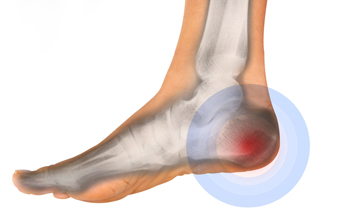
Many people across the country suffer from some kind of heel pain. Commonly, you might experience heel pain because of a condition known as plantar fasciitis. Although there are a multitude of different reasons why you might be experiencing heel pain, performing certain exercises might help alleviate the pain felt. One of the most common exercises is to stretch out your plantar fascia. This can be done from a seated position. Simply put one foot at a time on top of a cold water bottle and slowly roll the foot back and forth over the bottle, being careful and while gently rolling. This exercise can be performed for about one minute on one foot before alternating to the other foot. Additionally, you might try stretching your calves. This can be done by facing a wall and placing the palms of both your hands against the wall. Put one foot in front of you and another behind you. Slowly and repeatedly bend the knee of the leg in front of you as you lean forward with each bend. These are just some of the many different exercises that you might perform to alleviate heel pain. For more information, be sure to contact a chiropodist who can help.
Heel pain is a common problem that can be caused by a variety of injuries, medical conditions, and other factors. If you suffer from heel pain, please consult with one of the chiropodists from The Footcare Centre. Our chiropodists can help you maintain the health of your lower limbs and your mobility.
When it comes to heel pain, the exact location and type of pain are important to note. Some of the conditions that may cause heel pain include:
Plantar fasciitis - An inflammation of the ligament that runs along the bottom of the foot; it causes a stabbing pain under the heel that is at its worst when taking your first few steps after a long rest and while standing on your tiptoes or climbing stairs
Achilles tendonitis - An inflammation of the tendon in the back of the calf; it causes pain in the back of the heel that is at its worst after resting, as well as ankle and calf stiffness, swelling, and tenderness
Bone spurs - Bony lumps on the back of the heel bones that cause sharp pain upon first standing up; the pain becomes dull and achy over time
Heel fractures - A break or crack in the heel bone that causes pain, swelling, and difficulty walking
Retrocalcaneal bursitis - Swelling of the small, fluid-filled sac at the back of the heel bone; it causes pain, swelling, redness, and warmth in the back of the heel
Tarsal tunnel syndrome - Compression of the posterior tibial nerve which causes a pins and needles sensation in the heel, foot, and calf
Your chiropodist will be able to diagnose the underlying cause of your pain and prescribe the right treatments for you. If you have any questions, please feel free to contact our office located in . We offer the newest diagnostic and treatment technologies for all your foot care needs.
Heel Pain
Heel pain can range in severity from mild and annoying to severe and debilitating. Usually caused by an injury, heel pain can become chronic if it's left untreated. There are many different types of injuries that can bring about heel pain. When describing your pain, it is important to note the location and type of pain, as well as when the pain started and what activities make it better or worse.
Perhaps the most common cause of heel pain is plantar fasciitis, a condition in which the plantar fascia, a ligament that runs along the bottom of the foot, becomes inflamed due to repetitive overuse or trauma. This condition causes stabbing pain in the bottom of the heel. The pain is usually at its worst when you take your first few steps after a period of rest, like when you first get up in the morning. Plantar fasciitis is also sometimes accompanied by bone spurs, calcium deposits on the heel bone that can cause sharp pain that gradually evolves into a dull ache. Other possible causes of heel pain include Achilles tendonitis, heel fractures, bursitis, tarsal tunnel syndrome, and Sever’s disease.
Although treatment for heel pain depends on the underlying cause, most treatments involve resting, icing, and elevating the affected foot. Your chiropodist will also typically suggest that you wear more comfortable, supportive shoes or orthotics to help your heel heal. Over-the-counter pain medications are usually sufficient to manage heel pain. For more information about heel pain, please consult with a chiropodist.
